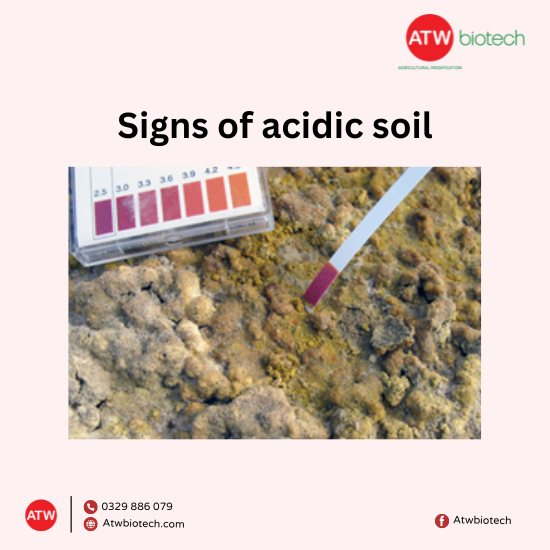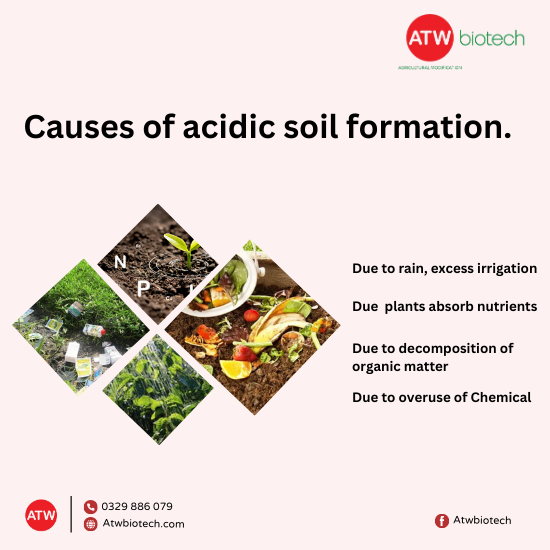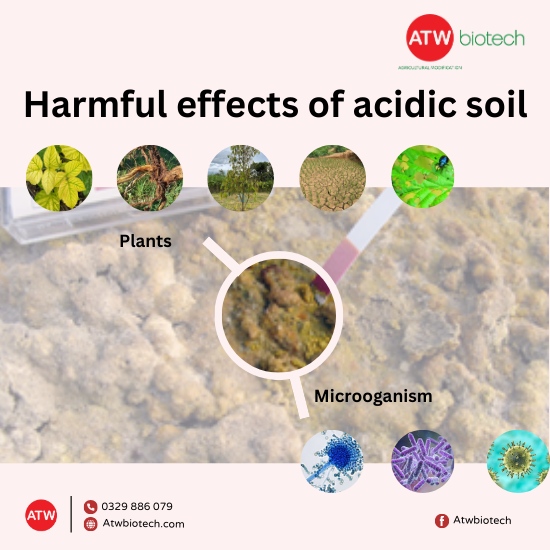Acid soil is a leading cause that hinders plant growth and suppresses beneficial microbial activity in the soil. For plants that cannot tolerate acid soil, altered soil properties can lead to plant death. Therefore, improving acid soil is a top priority.
If you are looking for sustainable methods for soil improvement, let’s explore the causes of acid soil formation and its impacts with ATW Biotech.
1. What is Acid Soil?
a. Definition
Acid soil, also known as "sulfate soil," is a phenomenon where the chemical properties of the soil are altered due to agricultural practices or specific regional characteristics. Acid soil is understood to have high acidity levels, with a pH of 6.5 or lower.
b. How to identify acid soil visually
- Potential Sulfate Soil:
- Usually saturated with water, remaining wet.
- Due to anaerobic conditions, it often appears greenish-gray from iron or slightly green in some cases.
- Marine sediments may contain shell debris.
- Organic matter such as decomposing leaves or rotting roots may be present.
- A strong rotten egg smell is produced from the anaerobic decomposition of organic matter.
- Active Sulfate Soil:
- Quite dry.
- Has a clumpy structure.
- Color ranges from dark to light brown, often with yellow spots (due to Jarosite minerals) and orange (iron oxides).

Signs of acidic soil can be identified with the naked eye
2. Causes of Acid Soil Formation.
- Due to Rain and Excess Irrigation: Nutrient-rich alkaline elements like calcium (Ca), magnesium (Mg), and potassium (K) are leached away into deeper soil layers, rivers, and ponds, leading to soil acidification.
- Nutrient Uptake by Plants: Repeated cropping depletes nutrients (N, P, K, Ca, Mg), causing significant losses of calcium and magnesium in the soil.
- Decomposition of Organic Matter: This releases various acids such as carbonic acid (H₂CO₃), sulfuric acid (H₂SO₄), nitric acid (HNO₃), and acetic acid (CH₃COOH). These acids dissolve calcium and magnesium, leading to soil acidification.
- Excessive Use of Chemicals: Overuse of chemical fertilizers, pesticides, and growth stimulants, especially those containing acidic minerals like ammonium sulfate (SA), potassium chloride (KCl), potassium sulfate (K₂SO₄), and superphosphate, also contributes to soil acidification.

Causes of acidic soil formation
3. Effects of Acid Soil on Crop Growth
a. Impact on Plants
- Acid soil inhibits root absorption of essential macro, secondary, and micronutrients needed for plant growth, reducing crop yields.
- High concentrations of free aluminum toxicity cause root constriction, leading to root rot, delayed flowering, low fruit set rates, stunted growth, and potentially plant death.
b. Impact on Microorganisms
- Beneficial microbial groups in the soil struggle to thrive in highly acidic conditions, resulting in the accumulation of insoluble compounds, soil degradation, and harm to crops.
- High levels of free aluminum toxicity are harmful to most living organisms, including beneficial soil microorganisms, leading to soil degradation, nutrient deficiencies, and plant toxicity.
4. Symptoms of Crops Affected by Acid Soil
- Leaves lose color, luster, and have sparse leaf veins.
- Plants die or exhibit stunted growth.
- Roots do not develop properly.
- Increased susceptibility to pests and diseases.
- Difficulty in temperature regulation, unable to retain water, and vulnerable to harsh weather conditions.

The impact of acidic soil is harmful to plants and soil microorganisms
Thus, identifying the causes of acid soil and implementing appropriate measures for soil improvement is crucial to mitigate its negative effects on crops.
Additionally, finding suitable crop varieties for acid soil and adopting sustainable farming techniques will enhance productivity and ensure the health of crops.


